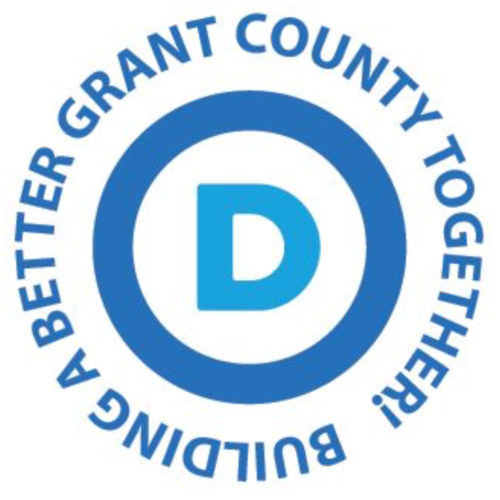DeLaney: Education report summarizes damage caused by less money, more chaos for schools
INDIANAPOLIS – Below are remarks given today by State Rep. Ed DeLaney (D-Indianapolis) to the Interim Study Committee on Education Issues. It covers the subject of education funding in the state of Indiana and its impact on teacher shortages in our state.
“Is Indiana policy designed to attract people to the teaching profession?”
As a member of the Indiana House Ways & Means Committee, I always am concerned with what our state budget does to fund education and the signals we send when we adopt those budgets.
I am deeply concerned that we are signaling a decline in support of our state’s traditional public schools, which serve nearly 94 percent of our students.
As a result of my growing concern, I asked the Legislative Services Agency to analyze how we have allocated funds to education overall and specifically how we have supported traditional schools, charter school, virtual charter schools and the voucher program. You have all received a copy of the July 14, 2015 report. The first two pages set out the funding history for each of the four programs and the third page sets out our overall level of support for education as a whole.
What do these numbers tell us?
The General Assembly now controls the funding of four distinct forms of publicly-funded schools: traditional schools (school corporations), charter schools, virtual charter schools, and schools accepting vouchers. I requested that LSA track the funding of these four pathways over the period from FY 2007 through FY 2015. Remember that this period largely overlaps the growth phase of charters and the start of vouchers. It also overlaps the period of the Great Recession and the end of using property taxes to fund teaching. I have made the LSA memorandum publicly available at http://indianahousedemocrats.org/teacher-shortage, so everyone is free to analyze this data on their own. This report focuses on the State as a whole, not individual districts or schools.
What do we learn from this report?
- From FY 2009 through FY 2015, state-directed funding for traditional schools fell by a total of considerably more than $3 billion and has yet to return to FY 2009 levels. (See the revenue line on p. 3 of the LSA report). Note that some of this shortfall was made up by the limited federal stimulus program.
- During the same period, the cumulative support for charter schools rose by more than $539 million. Virtual charter funding rose from nothing to over $50 million a year with the total for the period totaling more than $133 million. Voucher support went from nothing to over $113 million a year with a cumulative increase of some $248 million. Thus, the three new recipients of public funds gained $920 million dollars in support over the period.
- All of this activity has caused a small shift in attendance for the period from FY 2009 to FY 2015. Traditional school attendance fell from 987,000 to 952,000 over the period. The charters had a growth in attendance from 16,500 to some 25,000. Virtual charters went from zero to 8,400. Vouchers went from supporting no students to supporting some 29,000. Note that the total attendance for all types combined rose modestly from 1,003,000 to 1,015,000.
- Despite the attendance shifts within the four categories of publicly funded education, 93.9 percent of our publicly funded students presently are still in traditional schools. One may ask what message the General Assembly is sending when it cuts funding for 93.9 percent of our students and dramatically raises funding for the remaining 6 percent. I have two charts showing the changes in funding from a baseline of 2009.
- I believe that these charts and the LSA report show a dramatic drop in education funding and a shift of emphasis and funds from the 94 percent of our students in traditional schools. I believe that the public and especially aspiring teachers sense this shift. They have reacted.
The data referred to above is statewide. In addition, I have looked to other public sources to get an idea of how this impacts teachers and school corporations. I am posting references at http://indianahousedemocrats.org/teacher-shortage. Using these you can learn a great deal about teacher age, teacher pay, rates of retirement, and other information tied to particular districts.
Here are a few key data points I learned that impact schools and teachers:
- INPRS, the state pension organization, has a wealth of information on our teachers. The Demographic Assumptions used in our pension system tell us that some 35 percent of new teachers don’t enter a second year as teachers. These may be connected to the fact that the pay increase from year one to year two has fallen.
INPRS advises that the average years of teaching have fallen steadily from 2007 to 2015, declining from 15.6 years of service to 14.1 years. Over the same period, the number of active teachers in the pension system fell from 75,833 to 68,734. Of this lower number, some 10,400 are expected to retire over the next five years. They will need replacements.
What are the conclusions that can be drawn from this data?
Our state has cut support for K-12 education. It has diverted money to three new experiments. I believe this has been dispiriting to future teachers and confusing to the public.
We seem to forget that people rely on institutions when choosing a job. What institution can the new teacher look to? The General Assembly and its budget? A charter school with an unelected board or a for-profit operator? A school corporation that is subject to the whims of the Legislature on issues of pay, testing, financial support and access to property tax revenue?
I for one hope that this committee will start to rebuild our central educational institution, the school corporations. I also hope that we will put a moratorium on new educational experiments while we examine what less money and more chaos has accomplished.
About author
You might also like
Evan Bayh endorses Baron Hill in U.S. Senate race
(Indianapolis) — Former U.S. Senator and Governor Evan Bayh today released the following statement endorsing Baron Hill to serve as the next U.S. Senator from the State of Indiana: “I’ve
Joselyn Whitticker Releases First Radio Ad
Joselyn Whitticker, Democratic candidate for Indiana State Auditor today releases first radio ad.
Grant County Democratic Party Releases Statement on Zay’s Racist Remarks
The Grant County Democratic Party is disappointed in the leadership — or rather, lack thereof — on display by state Senator Andy Zay, who represents parts of Marion and Grant







